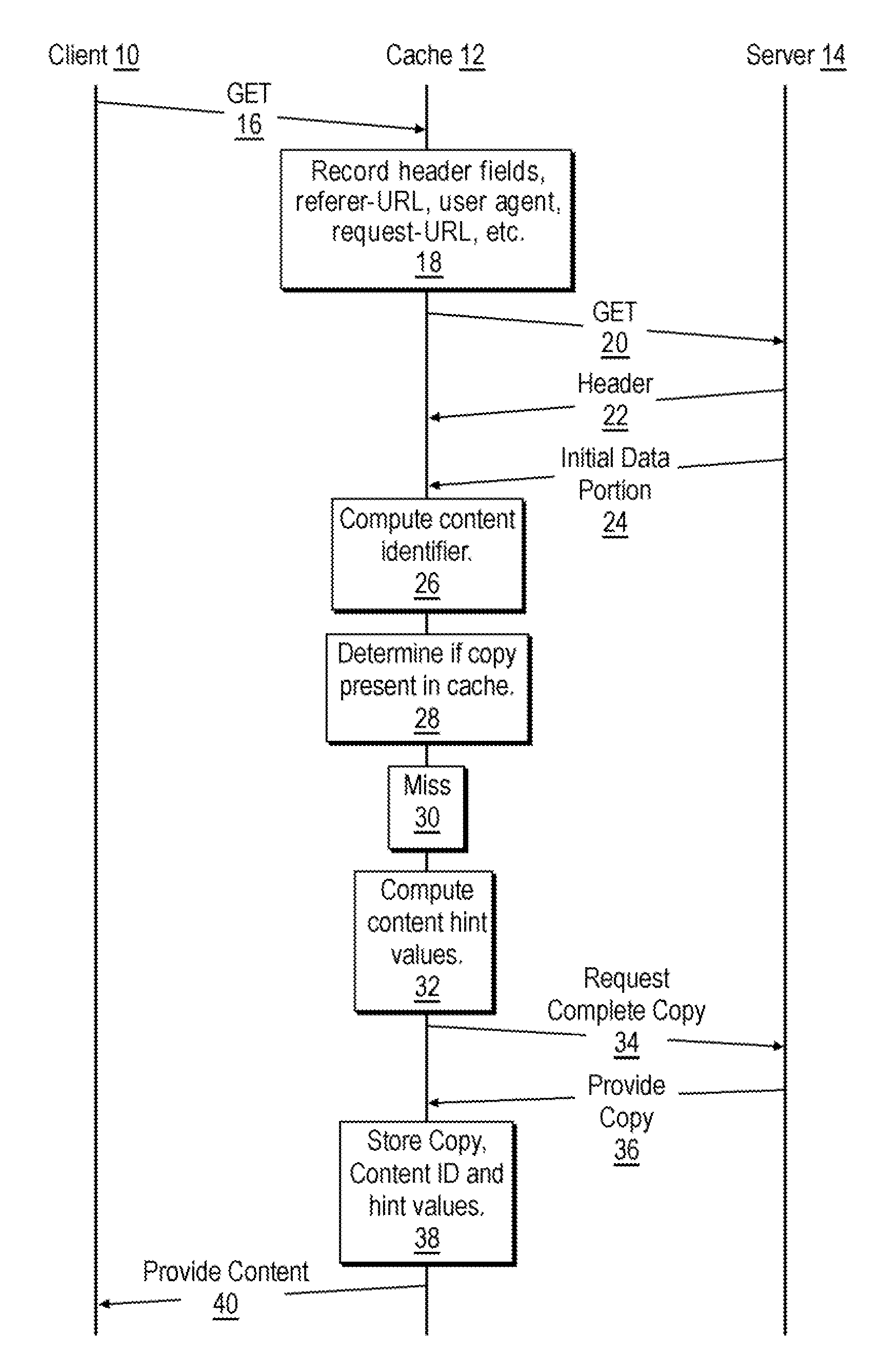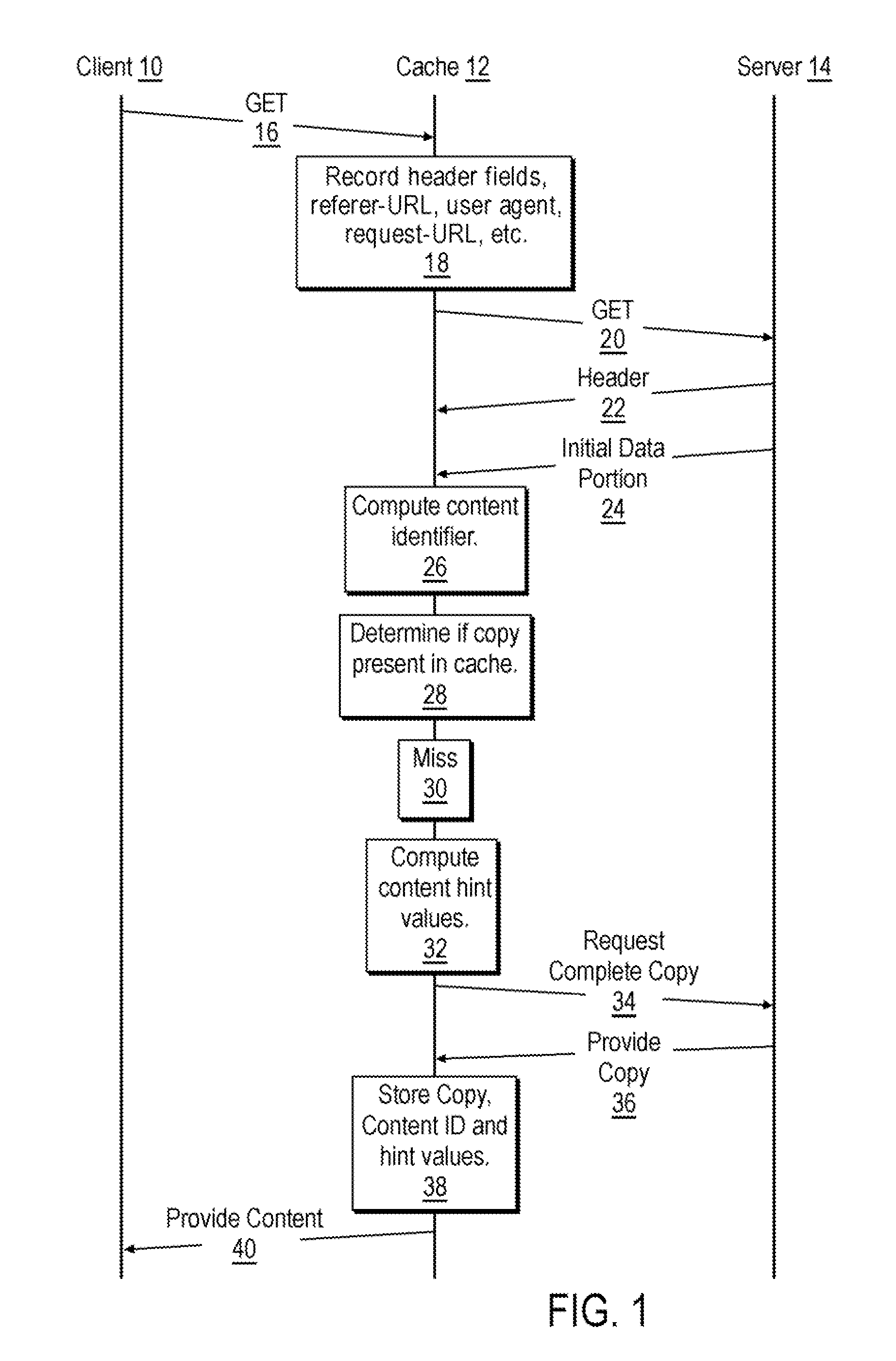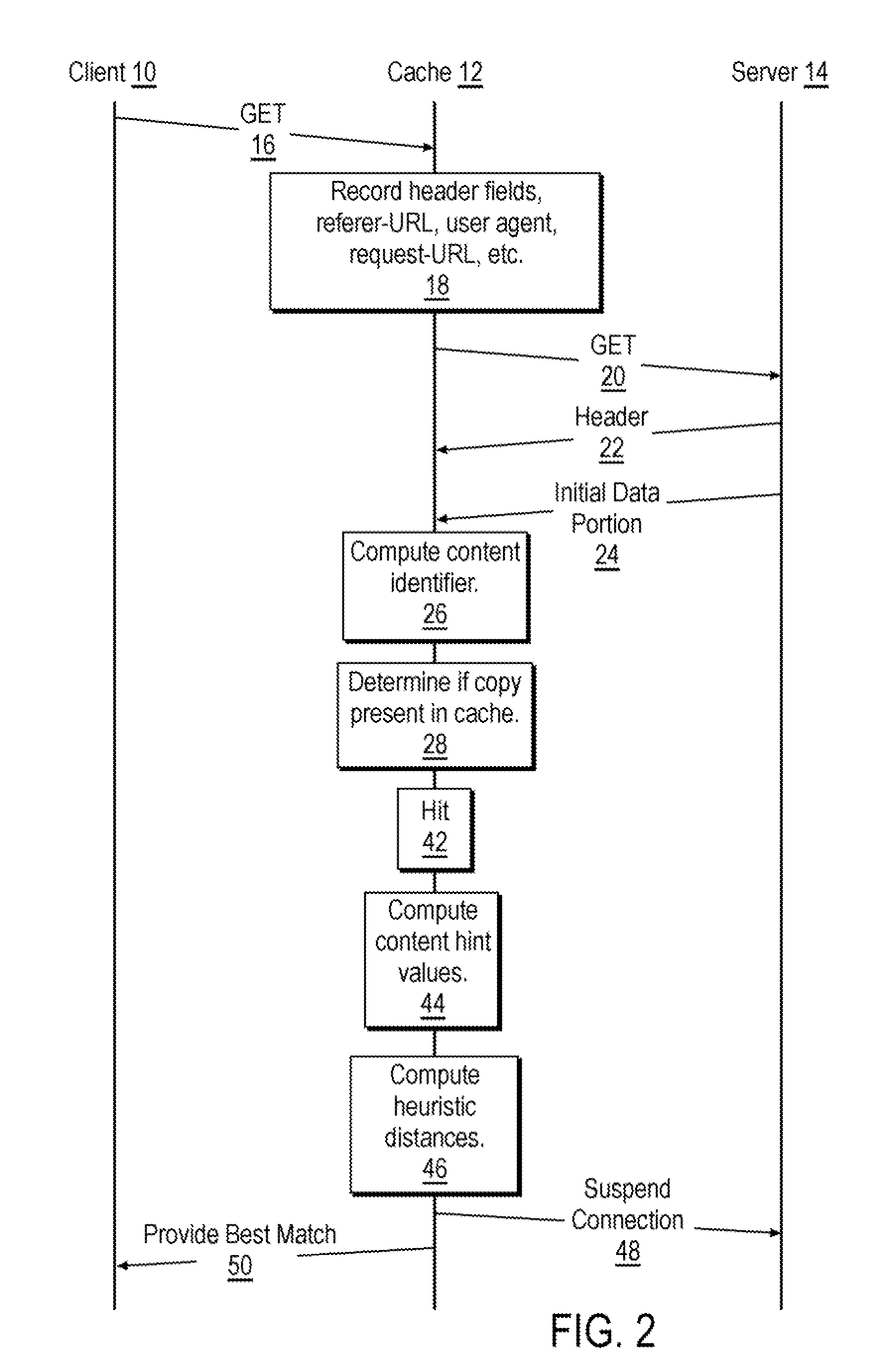Content associative caching method for web applications
a content associative and web application technology, applied in the field of content associative caching method for web applications, can solve the problems of not practical, technical and practical limitations of existing symmetric and asymmetric caching techniques, network administrators and providers that must support the internet infrastructur
- Summary
- Abstract
- Description
- Claims
- Application Information
AI Technical Summary
Problems solved by technology
Method used
Image
Examples
Embodiment Construction
[0012]Recognizing the shortcomings of conventional asymmetric caching techniques in the modern Web world, the present inventors have developed new techniques for identifying cached content. Instead of using fixed naming schemes as content identifiers, the present techniques use content signatures to identify cached content. Fixed naming schemes and heuristic methods to incorporate dynamic parameters may be used as hints to cached contents, thereby reducing collision rates and false cache hit rates.
[0013]To better understand the present invention, refer first to FIG. 1. The illustration shows a series of communications between a client 10, a cache 12 and an origin server 14. Assume that the cache 12 is logically disposed in a communication path between the client 10 and server 14. Precisely where the cache is located in this communication path is not critical to the present invention. The cache may be located on the same physical machine as the client 10 or the server 14, but in many...
PUM
 Login to View More
Login to View More Abstract
Description
Claims
Application Information
 Login to View More
Login to View More - R&D
- Intellectual Property
- Life Sciences
- Materials
- Tech Scout
- Unparalleled Data Quality
- Higher Quality Content
- 60% Fewer Hallucinations
Browse by: Latest US Patents, China's latest patents, Technical Efficacy Thesaurus, Application Domain, Technology Topic, Popular Technical Reports.
© 2025 PatSnap. All rights reserved.Legal|Privacy policy|Modern Slavery Act Transparency Statement|Sitemap|About US| Contact US: help@patsnap.com



